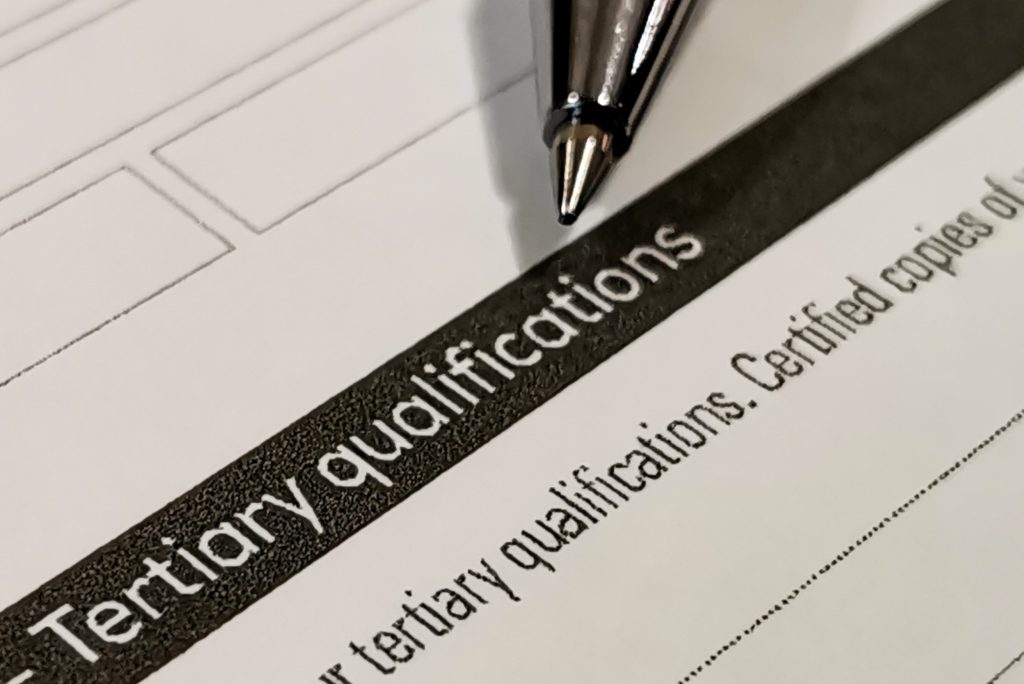Mastering the Special Tertiary Admissions Test 2025(STAT): Strategies and Insights

Are you considering taking the Special Tertiary Admissions Test 2025? Understanding what the test entails and how it can impact your academic journey is crucial. In this blog post, we will explore the key aspects of the Special Tertiary Admissions Test to help you make informed decisions about your future.
Free STAT Practice Test Online
Navigating the complexities of tertiary admissions can be daunting, especially for those with diverse backgrounds or life experiences. The STAT test provides a level playing field for all applicants, emphasizing skills and knowledge rather than traditional academic achievements. By understanding the nuances of this assessment tool, you can better position yourself for success in your educational pursuits.
In this comprehensive guide, we’ll delve into the specifics of the Special Tertiary Admissions Test, exploring its significance, structure, and practical tips for effective preparation. Whether you’re aiming to gain entry into university programs or meet specific academic requirements, mastering the STAT exam could be the key to unlocking a world of educational opportunities.

What is the Special Tertiary Admissions Test (STAT)?
The Special Tertiary Admissions Test (STAT) is an alternative pathway for individuals seeking entry into higher education institutions. Unlike traditional entry requirements that primarily focus on academic achievements, the STAT assesses a candidate’s readiness and capability to succeed in tertiary education through a different lens.
Purpose of STAT:
The primary objective of the STAT is to provide an opportunity for individuals who may not meet conventional academic entry standards but possess the skills and potential to excel in university studies. By evaluating critical thinking, problem-solving, and analytical reasoning skills, the STAT aims to identify candidates with the ability to thrive in an academic environment, irrespective of past academic performance.
Who Administers STAT?
The STAT is typically administered by the relevant tertiary education institutions or organizations responsible for the admission process. These institutions set the guidelines for the test and oversee its administration to ensure fairness and consistency in evaluating candidates. Depending on the country or region, different universities or educational bodies may conduct and manage the STAT testing process.
In summary, the STAT serves as a bridge for students from diverse backgrounds to demonstrate their aptitude for higher education, offering a more holistic approach to assessing candidates beyond traditional academic metrics.
STAT Eligibility and Registration
In order to take the Special Tertiary Admissions Test (STAT), there are specific criteria and a registration process that individuals need to follow. Here’s a breakdown of the eligibility requirements and the steps involved in registering for the STAT exam.
Eligibility Criteria for Taking STAT
To be eligible to sit for the STAT exam, individuals must meet certain requirements set by the administering body. Typically, candidates need to be at least 18 years old at the time of the test administration. Additionally, some institutions may have specific academic prerequisites or entry requirements for applicants taking the STAT exam. It’s crucial for candidates to carefully review the eligibility criteria provided by the institution or the relevant testing authority before registering for the exam to ensure they meet all the necessary requirements.
Registration Process
The registration process for the STAT exam usually involves several steps that candidates need to follow to secure their spot for the test. First and foremost, individuals must create an account on the official website of the test administering body or the institution offering the exam. Once the account is set up, candidates can proceed with filling out the online registration form, providing accurate personal information and selecting their preferred test date and location.
It is important to note that there are specific deadlines for registration for each test session, and candidates should ensure they complete the registration process within the stipulated timeframe to avoid any issues. Additionally, certain documentation, such as proof of identification or academic transcripts, may be required during the registration process. Candidates should carefully read all instructions provided during the registration to ensure they provide all the necessary documents and information accurately.
By understanding the eligibility criteria and following the registration process diligently, candidates can successfully register for the STAT exam and take a significant step towards their academic goals.
STAT Test Structure and Format
The Special Tertiary Admissions Test (STAT) is a standardized test used by universities in Australia to assess the academic capabilities of applicants who may not have traditional qualifications for higher education. Understanding the structure and format of the STAT exam is crucial for prospective test-takers. This section will delve into the different sections of the STAT test and how scoring and results are determined based on the performance in these sections.
Sections of the STAT Exam
The STAT test comprises two main sections: the Multiple Choice section and the Written English section. The Multiple Choice section consists of 70 questions that assess verbal and quantitative reasoning skills. Test-takers are required to answer these questions within a specified time limit, typically 2 hours. The Written English section focuses on evaluating written communication skills, where applicants are required to write two short essays on given topics. This section aims to assess the ability to construct coherent arguments and express ideas effectively.
Scoring and Results
Scoring for the STAT exam is based on both the Multiple Choice and Written English sections. Each section is scored separately, with the Multiple Choice section contributing to the quantitative reasoning score and the verbal reasoning score. The Written English section is scored based on the quality of writing, coherence of arguments, and overall communication effectiveness. The results of the STAT exam are presented in a percentile rank format, indicating how well an applicant has performed compared to other test-takers. Higher percentile ranks reflect stronger academic abilities and may enhance an applicant’s chances of gaining admission to their desired university programs. Understanding the scoring and results of the STAT exam is essential for candidates to interpret their performance accurately and make informed decisions regarding their future academic pursuits.
Preparing for the STAT Exam
When preparing for the Special Tertiary Admissions Test (STAT), it’s essential to have a solid study plan and effective strategies to perform your best during the exam. Here are some valuable resources and tips to help you prepare effectively:
Study Resources and Practice Materials
- STAT Preparation Guide: The official STAT preparation guide is a comprehensive resource that covers all sections of the exam, providing sample questions and tips for each. It’s a must-have resource for anyone preparing for the STAT exam.
- Practice Tests: Taking practice tests is crucial for familiarizing yourself with the format of the exam and identifying areas where you may need to improve. There are several online platforms that offer free STAT practice tests to help you assess your readiness.
- Textbooks and Study Guides: Utilize textbooks and study guides that cover relevant topics in mathematics, essays, and critical thinking. These resources can provide in-depth explanations and practice questions to enhance your understanding.
- Online Courses: Enrolling in online courses specifically designed for STAT preparation can be beneficial. These courses often offer structured lessons, video tutorials, and additional practice materials to support your learning.
Tips for Success
- Time Management: Practice time management skills by setting a timer for each section of the exam to simulate real exam conditions. This will help you allocate your time effectively and prevent running out of time on challenging questions.
- Focus on Weak Areas: Identify your weaker subject areas and dedicate more study time to improve them. Prioritize your study sessions based on topics that you find most challenging to ensure a well-rounded preparation.
- Stay Calm and Focused: On the day of the exam, remember to stay calm and focused. Take deep breaths to relax your mind and maintain a positive attitude throughout the test. Avoid rushing through questions and take your time to understand and answer them accurately.
Review and Revise: Before the exam day, allocate time for thorough revision of key concepts and practice questions. Reviewing your study notes and revisiting challenging topics can help reinforce your understanding and boost your confidence.
By incorporating these study resources and following these tips, you can enhance your preparation for the STAT exam and increase your chances of achieving a successful outcome. Remember, consistent practice and strategic preparation are key to performing well on test day.
Registration Process
The registration process for the STAT exam usually involves several steps that candidates need to follow to secure their spot for the test. First and foremost, individuals must create an account on the official website of the test administering body or the institution offering the exam. Once the account is set up, candidates can proceed with filling out the online registration form, providing accurate personal information and selecting their preferred test date and location.
It is important to note that there are specific deadlines for registration for each test session, and candidates should ensure they complete the registration process within the stipulated time frame to avoid any issues. Additionally, certain documentation, such as proof of identification or academic transcripts, may be required during the registration process. Candidates should carefully read all instructions provided during the registration to ensure they provide all the necessary documents and information accurately.
By understanding the eligibility criteria and following the registration process diligently, candidates can successfully register for the STAT exam and take a significant step towards their academic goals.

Benefits of Taking the STAT
The Special Tertiary Admissions Test (STAT) offers a range of benefits to individuals seeking to pursue higher education. By providing an alternative pathway and promoting diversity and inclusivity, the STAT plays a crucial role in enabling more individuals to access tertiary education programs.
Alternative Pathways to Higher Education
The STAT exam serves as an alternative route for individuals who may not have followed traditional academic pathways or have been out of formal education for some time. It offers a fair and equitable opportunity for mature-age students, those with vocational experience, or individuals with non-traditional educational backgrounds to demonstrate their readiness for tertiary studies. This flexibility in admissions criteria can empower individuals to pursue their educational aspirations regardless of their previous academic journey.
Diversity and Inclusivity
One of the key advantages of the STAT is its contribution to fostering a diverse and inclusive student population within tertiary institutions. By recognizing the varied academic backgrounds and life experiences of test-takers, the STAT accommodates a more comprehensive range of skills and knowledge. This inclusivity not only enriches the learning environment but also promotes a broader perspective that benefits all students. Moreover, it helps institutions in creating a more representative student body reflective of society’s diversity.
In conclusion, the STAT not only expands access to higher education but also enhances the educational experience by embracing diversity and inclusivity. By recognizing the value of diverse perspectives and alternative pathways, the STAT plays a pivotal role in promoting equal opportunities for all individuals seeking to further their academic pursuits.
Conclusion
The Special Tertiary Admissions Test provides a unique opportunity for individuals to showcase their abilities and potentially gain entry into tertiary education institutions. Throughout this article, we have delved into the various aspects of the test, from its structure to preparation tips. By understanding the importance of the STAT and knowing how to approach it, candidates can set themselves up for success.
Reflecting on Your Journey
As you wrap up your preparation for the Special Tertiary Admissions Test, take a moment to reflect on your journey. Consider the progress you have made, the challenges you have overcome, and the skills you have honed during this process. Embrace the growth and learning that have come from your hard work and dedication.
Embracing Opportunities
Entering the examination room on test day can be a nerve-wracking experience, but remember that this is your chance to shine. Approach each section with confidence, drawing on your knowledge and skills to tackle the questions to the best of your ability. Embrace the opportunity to demonstrate your aptitude and potential to the admissions committees.
Continuing Your Path
Regardless of the outcome of the Special Tertiary Admissions Test, remember that this test is just one step on your academic journey. Whether you achieve the results you hoped for or face unexpected challenges, stay determined and focused on your goals. Use the experience gained from preparing for the STAT to drive your commitment to furthering your education and pursuing your aspirations.